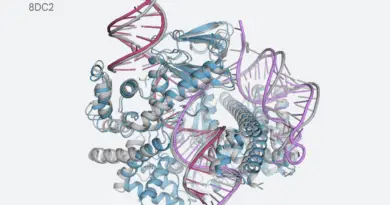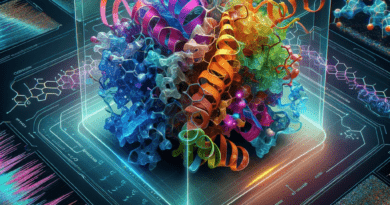DPI_CDF: A New Way to Find Drug Targets Quickly

A recent paper titled “DPI_CDF: Druggable Protein Identifier Using Cascade Deep Forest“ introduces an innovative computational method for identifying proteins and enzymes that are potential targets for drug development. Authored by researchers aiming to streamline the drug discovery process, this study is significant because finding new drug targets is essential for developing treatments for a wide range of diseases.
The Need for Innovative Drug Target Discovery
Proteins play a crucial role in the mechanisms of diseases, making them primary targets in drug development. Traditional methods of identifying these druggable proteins (DPs) involve experimental procedures that are time-consuming, costly, and resource-intensive. With the ever-growing demand for new therapeutics, there is a pressing need for efficient, accurate, and cost-effective computational approaches to predict potential drug targets.
Introducing DPI_CDF
To address this challenge, the researchers developed a new computational model called DPI_CDF. This model utilizes advanced deep learning techniques, specifically a method known as Cascade Deep Forest, to analyze protein sequences and predict their druggability based solely on their amino acid composition.
Deep Learning Approach in DPI_CDF
The DPI_CDF model processes protein sequences through three main steps:
- Feature Encoding: The protein sequences are converted into a numerical format that the model can process. This involves encoding:
- Evolutionary Information: Capturing how proteins have changed over time to identify conserved regions that may be critical for function.
- Physicochemical Properties: Considering attributes like hydrophobicity, charge, and molecular weight.
- Sequence Composition: Analyzing the frequency and arrangement of amino acids in the protein.
- Hybrid Feature Composition: Different types of encoded data are combined to capture both local and global properties of the protein sequences. This hybrid approach enhances the model’s ability to recognize patterns associated with druggable proteins.
- Cascade Deep Forest Model: At the core of DPI_CDF is the Cascade Deep Forest algorithm. Unlike traditional deep learning models that rely on neural networks, Cascade Deep Forest builds an ensemble of decision tree models in multiple layers. Each layer refines the predictions of the previous one, allowing for a more nuanced analysis without the need for extensive hyperparameter tuning.
Performance and Validation
The researchers tested DPI_CDF using established statistical methods to ensure its reliability and effectiveness. The model outperformed existing methods, achieving higher accuracy in identifying druggable proteins. This success demonstrates the potential of Cascade Deep Forest in handling complex biological data.
Despite its promising results, the DPI_CDF model has some limitations:
- Complexity of Feature Encoding: The intricate process of encoding features requires specialized expertise, making it less accessible to non-specialists.
- Lack of User-Friendly Tools: Currently, the model has not been made available as a user-friendly software or web application, limiting its immediate applicability in the broader scientific community.
- Data Diversity: Enhancing the model’s accuracy may require incorporating more diverse datasets to ensure it performs well across different protein families and organisms.
Implications and Future Developments
DPI_CDF represents a significant advancement in computational methods for drug target discovery. By efficiently predicting druggable proteins, it can:
- Accelerate Drug Discovery: Reducing the time and cost associated with identifying new drug targets.
- Facilitate Personalized Medicine: Helping to identify specific targets relevant to individual patients or subpopulations.
- Encourage Further Research: Inspiring the development of more accessible tools and improved models with higher accuracy.
Future improvements may focus on simplifying the model’s usability, possibly by developing a user-friendly interface or software package. Additionally, integrating larger and more diverse datasets could enhance the model’s predictive power.
The development of DPI_CDF showcases the potential of deep learning techniques in revolutionizing drug discovery. By providing a faster and more cost-effective method for identifying druggable proteins, this model holds promise for advancing medical research and bringing new treatments to patients more efficiently.
References
- Original Research Paper. DPI_CDF: Druggable Protein Identifier Using Cascade Deep Forest.
Keywords
Druggable Proteins, DPI_CDF, Cascade Deep Forest, Deep Learning, Protein Sequence Analysis, Drug Target Discovery, Computational Biology, Bioinformatics, Machine Learning in Healthcare
Disclaimer: The information presented in this article is for informational purposes only and reflects the findings of the referenced study as of the publication date. For detailed information, please refer to the original research paper or consult professionals in the field.



